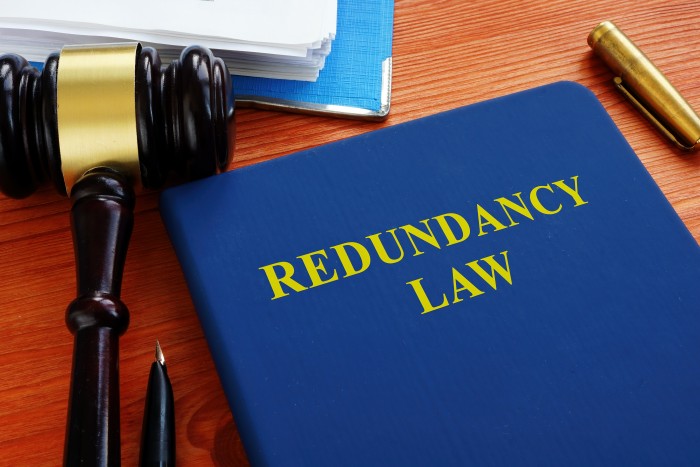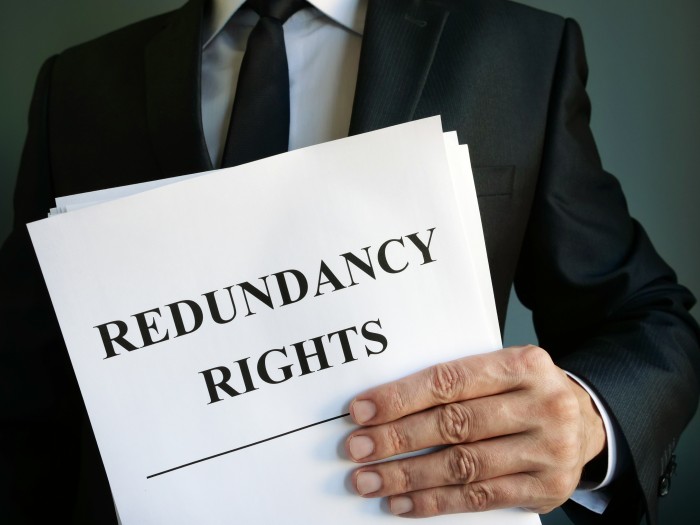
Redundancy Employment Law for Employers
Understanding Redundancy Employment Law for Employers
In the realm of employment law, redundancy is a term that you as an employer need to understand fully. It’s not just about letting an employee go. It’s a complex process that needs careful management to ensure compliance with legal obligations and prevent potential disputes. This is why it’s important to understand redundancy employment law for employers.
In layman’s terms, redundancy occurs when an employer reduces their workforce because a job or jobs are no longer needed. This situation may arise due to several reasons. It might be because of:
- A decline in business or a downturn in the industry
- The introduction of new technologies making certain roles obsolete
- A business relocation or closure
- A restructure or reorganisation within the company
It’s important to note that redundancy is about the role, not the person. In other words, it is the position that’s made redundant, not the employee. Redundancy is entirely non-personal and as an employer, it’s crucial to ensure you handle it as such to maintain fair and legally compliant practices.
Legal Obligations of Employers in Redundancy Situations
Redundancy employment law for employers
When handling redundancies, there are several key legal obligations that you must meet. Falling short of these requirements can expose you to legal risks and potential tribunal claims.
One of your fundamental responsibilities involves giving your employees adequate notice. This notice period is typically:
- One week for employees with between one month and two years of service
- One week for each year if employed between two and twelve years
- Twelve weeks if employed for twelve years or more
Another crucial obligation is to pay redundancy pay. Employees with two years’ service or more are entitled to a statutory redundancy payment. This payment is calculated based on the employee’s age, weekly pay, and length of service.
Also, when making 20 or more employees redundant over 90 days or less, you must engage in collective consultation. This involves providing specific information and consulting with elected representatives or a trade union. Failure to do this can lead to protective awards of up to 90 days’ gross pay for each employee.
Lastly, you must follow a fair redundancy procedure. This includes establishing fair selection criteria, properly consulting with employees, considering alternatives to redundancy and giving employees the right to appeal their redundancy.
In the complex world of redundancy employment law for employers, knowledge is power. Ensuring you meet these legal obligations and handle redundancies properly can help protect your business from costly and damaging legal disputes.
The Redundancy Consultation Process: Best Practices
Redundancy Employment Law Consultation Process
The redundancy consultation process is an essential part of the redundancy journey. As an employer, you have a legal obligation to consult with your employees before making any redundancy decisions. This consultation process is not just a mere formality. Instead, it is a genuine exercise aimed at finding ways to avoid, reduce or mitigate the impact of redundancies.
The consultation should start at the earliest possible time. It’s a dialogue with the potential affected employees. Encourage your employees to share their thoughts and ideas, and ensure you listen to their suggestions. It might surprise you how a different perspective can present new solutions.
Here’s a basic structure you can use:
- Openly discuss the reasons for proposed redundancies
- Consider their suggestions to avoid redundancies
- Talk about how to reduce the number of redundancies
- Consider how to lessen the adverse effects of redundancies
Remember, failure to adequately consult can lead to an unfair dismissal claim. So take redundancy employment law for employers seriously, be transparent and engage in meaningful discussions with your employees.
When the possibility of redundancy looms, it’s my job to guide you, the employer, on how to proceed and the consultation process is a key part of this journey.
Redundancy Employment Law for Employers: Avoiding Unfair Dismissals
Creating a fair and objective selection criteria is crucial when identifying employees for redundancy. The objective here is to prevent allegations of discrimination or unfair dismissal.
Your selection criteria should be based on measurable and verifiable facts. Steer clear of subjective judgement that can be influenced by personal biases. Some common criteria include:
- Skills and qualifications: Keeping those with the skills your business needs most can be a sensible decision
- Attendance records: Remember to consider the reasons behind any absences, as some might be protected by law, like maternity or medical leave
- Disciplinary records: Keep in mind that it may not be fair to include minor or old disciplinary actions
- Work performance: Ensure you have proper records to back up any decisions based on performance
Be sure to apply the criteria consistently and fairly across all employees. Document your decisions and the reasons behind them. If you’re unsure, consider seeking professional legal advice to ensure your criteria and process are fair and lawful.
Being mindful of these best practices will help you to navigate the redundancy process more smoothly. Remember, the key is to maintain open lines of communication and to be transparent, fair and objective in all your decisions. Your efforts to act in a fair and balanced manner will go a long way in minimising the risk of potential legal issues.
Case Studies and Legal Precedents: Lessons from the Field
As we look at real-life cases and legal precedents, we gain a better understanding of redundancy law in practice and gain valuable lessons and insights.
Redundancy Employment Law for Employers
Consider a landmark case: Rolls Royce plc v Unite the Union [2009]. Here, the employer used ‘last in, first out’ (LIFO) as their selection criteria for redundancy. The union argued that this criteria indirectly discriminated against younger workers. The court ruled in favour of the union, highlighting that while LIFO was a customary practice, it could lead to age discrimination.
What can we learn from this? It underlines the importance of choosing selection criteria that don’t disadvantage a particular group. It’s a reminder to steer clear of traditional methods that may inadvertently lead to discrimination.
Another case worth noting is Mitchells of Lancaster (Brewers) Ltd v Tattersall [2012]. In this case, the employer failed to consult about alternative employment opportunities before making redundancies. The employment tribunal held that the dismissal was unfair, as the consultation process was inadequate.
The lesson is to always explore and discuss alternatives to redundancy during the consultation process. Never underestimate the importance of a thorough and meaningful consultation.
In the maze of redundancy employment law, these cases serve as our markers, helping us avoid pitfalls. Remember, every decision you make, every process you undertake, carries legal implications. Using past cases as our guides, we can navigate redundancy more safely and confidently.
This concludes our review of redundancy employment law. Handling redundancies can be challenging, but with a comprehensive understanding of the law, adherence to best practices and fair decision-making, you can ensure a smoother process. As always, consider seeking legal advice tailored to your specific circumstances. You’re not alone in this journey.
Call John Bloor at EBS Law on 01625 87 4400 if you are an employer and need free Employment Law Advice.
Redundancy Law for Employers.


